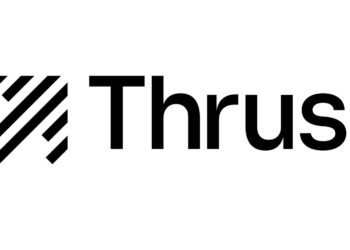DASH surges 42.76% in a week: Q3 revenue surpasses expectations, but EPS falls short; 2026 investment strategy sparks after-hours decline
- DASH surged 42.76% in 7 days despite a 16% post-earnings selloff on Nov. 5, 2025. - Q3 revenue beat estimates ($3.45B vs. $3.36B), but EPS fell below $0.68–$0.69 consensus. - 2026 spending plans and Deliveroo acquisition costs triggered profit concerns, offsetting strong 13.8% net margin. - Analysts focus on capital allocation and $5B buyback potential amid near-term volatility from reinvestment emphasis.
On November 6, 2025,
For the third quarter, DoorDash posted revenue of $3.45 billion, surpassing the expected $3.36 billion. Total Orders grew 21% year-over-year to 776 million, and Marketplace Gross Order Value (GOV) rose 25% to $25.0 billion. However, earnings per share (EPS) came in at $0.55, missing the consensus range of $0.68–$0.69. This shortfall, along with management’s outlook for higher spending in 2026, immediately unsettled investors.
After hours, DASH shares fell by about 16%. The drop reflected worries about DoorDash’s plans to ramp up investment in new projects and platform enhancements in 2026. Management indicated they plan to spend “several hundred million dollars” more in 2026 compared to 2025, raising concerns about short-term profitability. Additionally, the recent acquisition of Deliveroo is projected to lower 2026 EBITDA by $32–$40 million due to accounting adjustments, further complicating the company’s financial outlook.
Despite these headwinds, DoorDash continues to demonstrate operational resilience. The company’s net revenue margin improved to 13.8% from 13.5% a year earlier, and it generated $723 million in free cash flow during Q3. The integration of Deliveroo is expected to add $45 million to Q4 Adjusted EBITDA, with more substantial benefits anticipated in 2026. DoorDash also pointed to expanded partnerships and new business segments, such as grocery and retail, as important growth drivers going forward.
Analysts believe that investor attention will remain on how DoorDash manages its capital and executes its 2026 investment strategy. The company’s $5 billion share repurchase authorization, announced in February 2025, has yet to be utilized, and any buyback activity could boost the stock. Nonetheless, with DASH’s recent after-hours slide and the company’s focus on reinvestment, short-term volatility is likely to continue.
Backtest Hypothesis
To analyze how stocks like DASH respond to earnings disappointments, a backtesting method can be applied using historical data from 2022 onward. This strategy involves setting a fixed trade size, predetermined stop-loss, and take-profit thresholds to evaluate risk-adjusted performance. The main goal is to model a portfolio that initiates trades on the day of an earnings miss and exits after a specified period, with adjustments for prevailing market conditions.
The backtest relies on a series of closing prices to calculate returns. A stop-loss is set at a specific percentage below the entry price to cap potential losses, while a take-profit is determined either by historical volatility or a set percentage above the entry. Trades are typically held for a short duration—between 3 and 7 days—to capture immediate price movements while minimizing exposure to longer-term swings.
For DASH, the earnings miss on November 5 serves as a relevant example. If the strategy had bought the stock at the close on November 5, a 16% stop-loss would have resulted in an exit matching the after-hours drop. On the other hand, a 10% take-profit target would not have been reached, highlighting the risks of trading in the volatile period following earnings announcements.
Disclaimer: The content of this article solely reflects the author's opinion and does not represent the platform in any capacity. This article is not intended to serve as a reference for making investment decisions.
You may also like
Thrust Launches on Solana to Redefine Celebrity Coins and Fan Ownership

Cardano News Update: Large Holders Transfer $22.8M ADA to Vaults Amid Bearish Short-Term Sentiment
- Cardano (ADA) fell below $0.58 as bearish momentum and rising short positions drive a 10% weekly decline, with Santiment data showing weakened on-chain activity. - Whale activity surged, moving $22.8M ADA to private wallets, suggesting institutional accumulation amid a $3.02M net outflow from exchanges. - Technical indicators highlight a critical $0.64 support level for potential recovery, while Input Output's Ouroboros Phalanx upgrade aims to boost scalability and transaction speeds. - Derivatives trade

Bitcoin News Update: Jamie Dimon's Reversal on Cryptocurrency: JPMorgan Adopts Stablecoins as Conventional Financial Instruments
- JPMorgan pivots to integrate stablecoins and blockchain into institutional services, led by CEO Jamie Dimon’s shift from skepticism to endorsement. - The bank launches interest-bearing Deposit Tokens on Coinbase’s Base network and plans to accept Bitcoin/Ethereum as loan collateral by 2025. - This aligns with broader crypto adoption trends, including rising Bitcoin hashrate, stablecoin funding, and regulatory frameworks like EU’s MiCA. - Dimon emphasizes blockchain’s institutional potential despite marke

Prediction Markets See Declining Confidence in Trump’s Tariff Case